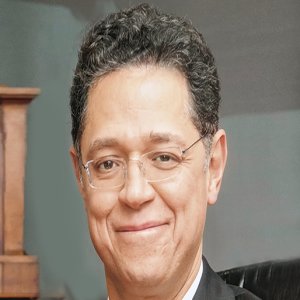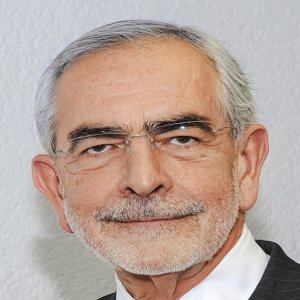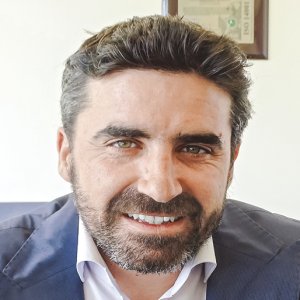The Job Of Unbundling CFE

The Job Of Unbundling CFE

STORY INLINE POST
Q: What role have Mexican law firms played in the enactment of the Energy Reform in the last three years?
A: It was a small role at the beginning of the process but 18 months ago the government realized it needed lawyers to draft the regulatory framework so it launched a call for bids. CMS Cameron McKenna, our partner firm, and Woodhouse Lorente Ludlow competed against two other firms and won the bid, later helping the Ministry of Energy draft the electricity market rules and the guidelines for CFE’s restructuring. We had contact with several industry players during this process, including other law firms and consultancies, and we observed a worrying lack of expertise in energy regulation matters, particularly regarding the electricity market. An open power market is new to all in the industry and new guidelines and regulations are being drafted, so it is difficult for Mexican law firms to catch up with this process. We think the situation will get better as the market evolves but the learning curve is still high for most of our competitors.
Q: As part of the team that drafted the guidelines, what is your perspective of CFE’s restructuring process?
A: We were not completely satisfied with the outcome because we only reached half of what we wanted. We do acknowledge, however, that breaking up a huge player while maintaining its competitiveness and creating a level playing field for everyone else was a titanic enterprise. It will take time to complete the unbundling process but we feel Mexico is moving in the right direction. Where we are now is enough to allow for competition and that makes the industry happy.
The restructuring guidelines also have provided enough incentives for CFE’s subsidiaries to act as independent entities, which was another factor to consider. Each subsidiary now has its own budget and must provide independent results so they have to plan and work separately or they will risk their business. We now need to erase the image of CFE as one huge company because that is no longer the case. To help the energy sector and the company itself we wanted to prevent the subsidiaries from using the name “CFE” but that was one of the battles we lost. We are satisfied, however, that the separation is happening in practice even if they use similar names. We have already observed some competition among CFE’s units to keep the best employees on their side. For us, that is a good sign that the unbundling process is moving forward.
Q: Can private companies really compete against CFE’s subsidiaries and affiliates under this scenario?
A: Private companies were greatly concerned about CFE being too strong to compete against but the state-owned utility has the disadvantage of being slow by nature. CFE had no competition before so it was used to doing things in line with its own rhythm and not the market’s. It now faces the challenge of changing its mindset to become competitive. Private companies are more likely to win contracts than the public entity so it is necessary for CFE to speed up the unbundling process and ensure its new management has a commercial mindset.
Q: Which of the market regulators will be in charge of ensuring the market is actually competitive?
A: It is a shared responsibility among different public entities. There are two levels of competition that need to be created in the market. The first is to avoid monopolistic practices, which will be overseen by COFECE, Mexico’s competition authority, while the second level of competition is more related to the daily market operations and will be the responsibility of CENACE and the surveillance mechanisms operating in the market. We call this second competition level “market efficiency” to avoid confusion with COFECE’s jurisdiction but it actually refers to maintaining a competitive environment in the market.
CRE has already created a special division focusing on the market’s efficiency and a privately owned independent unit will also be present to act as a market monitor. Both figures will have a more rapid response than COFECE and will be crucial for identifying and fixing market distortions caused by artificially driven price behavior. In the case of identifying monopolistic practices, the market monitors could notify COFECE, whose job is to keep large players from dominating the market and restraining competition.
Q: Will it be positive or negative for Mexico if some of CFE’s subsidiaries or affiliates disappear as a result of fiercer competition?
A: CFE has several labor commitments to honor from its past as a state-owned utility and many people rely on it. There is a social element here that cannot be ignored. Mexico created the legal separation guidelines so CFE could remain competitive and survive in this new environment but it might happen that some subsidiaries disappear in the process, even if the ideal is that all remain. The market is not dependent on CFE’s survival but we needed to give the former monopoly the tools to be competitive so it can meet its obligations. Otherwise we would create a highly competitive electricity market but ignite a social revolution. A similar situation occured in other countries that liberalized energy markets before Mexico. Governments cannot just ignore their former utilities’ commitments. We needed to find the optimal way to do it and we saw legacy agreements as the right path to follow. CFE can keep its legacy power plants and supply agreements and will have the time to revamp its facilities and increase its competitiveness before those legacy agreements expire.
That CFE is meeting its former obligations also incentivizes competition because it frees the market from paying the system’s debts in a different way – by taxing electricity tariffs, for instance, which would also lead to social rejection. Our solution is a delicate balancing act between free competition and CFE’s survival but we are happy with it because it seems to be working. We carefully analyzed this model before going for it and we still think it was the best option given Mexico’s social and economic conditions.
Q: How would the bankruptcy of one of CFE’s subsidiaries or affiliates be handled?
A: It depends if it is a subsidiary or an affiliate. A subsidiary is still part of CFE’s administrative structure so its bankruptcy would be more difficult to handle. Because of this, subsidiaries are protected by CFE’s existing assets, which also give financial institutions that have legacy contracts with the utility certainty about their former investments. An affiliate, on the other hand, has to be sustainable on its own and act as a completely independent unit so its bankruptcy would be managed like any other company in the industry. The incentives given to CFE’s different subsidiaries have created a new market reality and transmission is one of the most interesting cases. CFE Transmisión no longer cares about generation costs as it bases its revenues on the transmission tariffs defined by CRE. To be profitable, CFE Transmisión has to focus completely on running the grid properly, which will also incentivize investments in technologies to diminish technical and nontechnical losses.
Q: CFE has experienced significant economic losses in the past. What happens if the company cannot cope with this new phase?
A: We do not think this will happen because CFE now has the opportunity to stop its economic losses. Many of the bad results in the past came from irresponsible decisions that went unnoticed due to the company’s previous structure. CFE used to be this big black box where the money came in and out without anyone knowing exactly what happened in between. Now it is more difficult to hide bad decisions because the utility has a more transparent organization. Having specific activities divided into several subsidiaries and affiliates also makes it more accountable than before.
We think that CFE’s management board will now be able to easily identify the causes of the losses, which will help to control and reduce them. Moreover, the entrance of new players is an incentive for the company to reduce its economic losses. Improving transparency and accountability was one of the major reasons why CFE’s unbundling was so urgent. We expect CFE’s transformation to be challenging in the beginning but it is a unstoppable trend.
Q: To what extent is the market sending the right investment signals to the industry?
A: We think the facts speak for themselves. When Mexico launched the power auction’s guidelines a large share of the industry said that we were crazy and no one would present a bid. In fact, CENACE received over 200 economic proposals from different companies willing to participate in the auction. A similar situation can be observed in other areas of the market. We heard a lot of complaints but we see the market moving and a lot of interest from the private sector. We think the market is sending the right signals not because we worked on the elaboration of the market’s foundations but because we see the results. Every week we read about new companies entering the Mexican market, establishing partnerships or going into long-term agreements. It is just amazing how much is happening in the energy sector.























